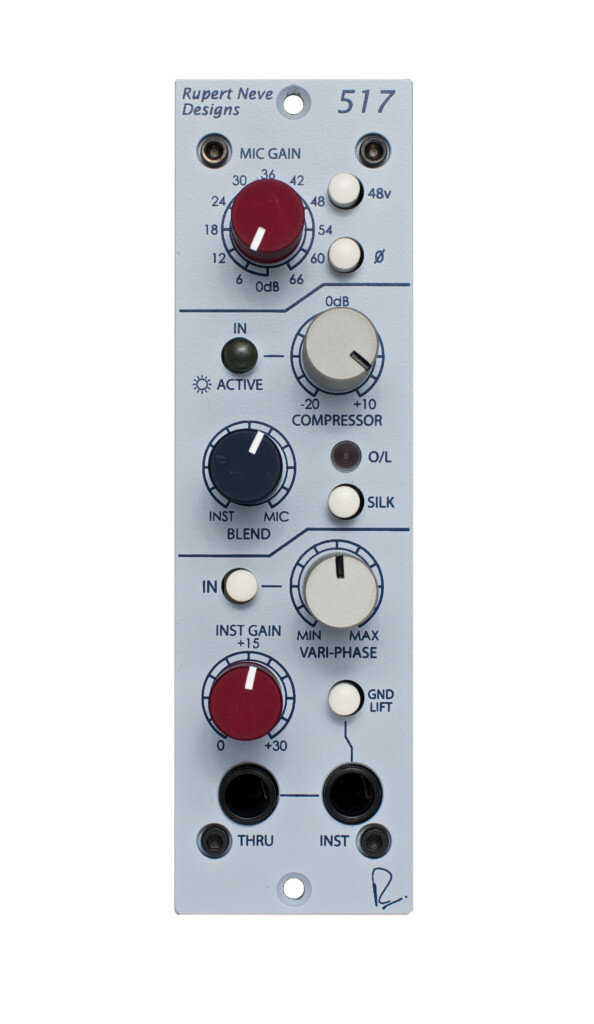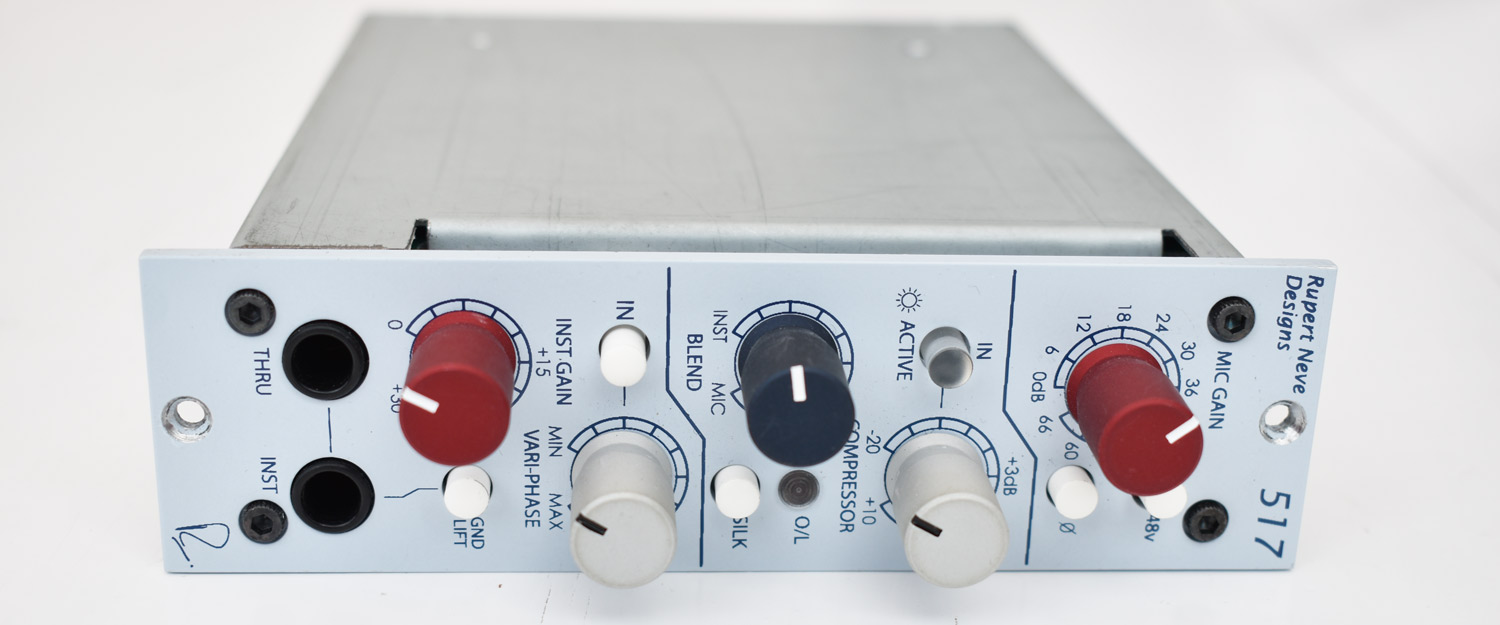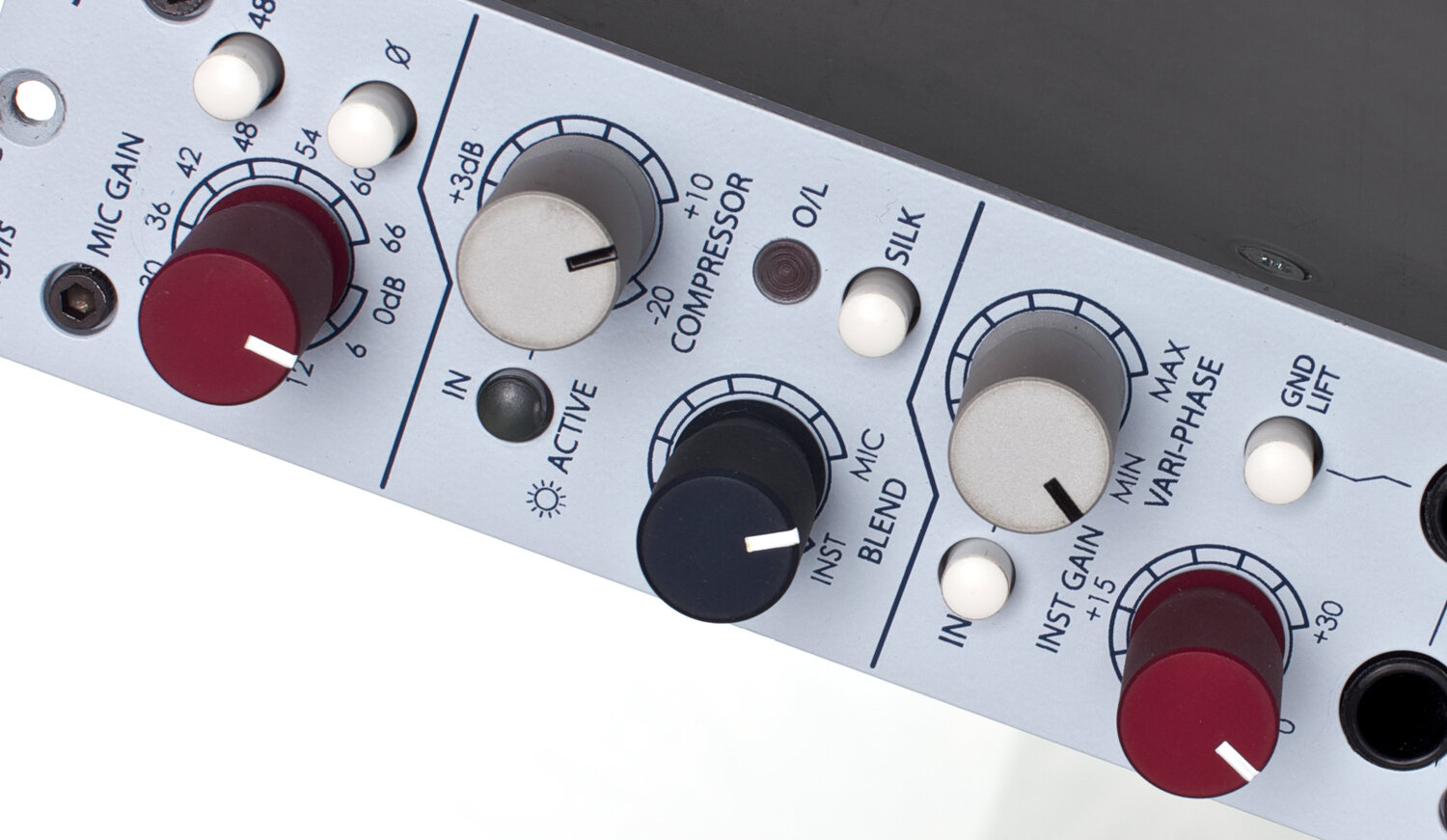Product omschrijving
The “it does everything” box.
The 517 provides a world-class transformer-coupled mic preamp, one-knob compression, DI circuitry with Vari-phase, Silk saturation and DI + mic blending capabilities – all in a single module.
Mic Pre and Instrument Amplifier
The 517′s mic pre – based on the TEC Award-winning portico 5017 – provides up to 66dB of gain, polarity-reverse and phantom power switches, and the “Silk” circuit for a more vintage vibe. The separate instrument amplifier includes 30dB of gain, a ground lift, variable phase and an instrument Thru connection.
Blended Use
Used as a single channel device for instruments, the 517 can be used to phase align, combine and compress direct and amplified signals. To achieve this, use the DI for the instrument’s direct signal and the mic preamp for the speaker cabinet signal. The blend control is used for mixing direct and amplified signals to achieve the desired tonal blend between the two sources, and the variphase is used to minimize or extenuate phase cancellations between the two signals. To compress the blended signal, the internal compressor jumper must be set to the blend path (this is the default setting). This technique could also be used to create a single, mixed output of a guitar and vocals.
The Compressor
Based around a new LDR (light dependent resister) design, the 517′s opto-coupler compressor has been simplified to a single threshold control with auto make up gain. By default, the compressor is set to a fixed 2:1 ratio with fixed attack and release. To set the compressor, simply dial the threshold control down until the desired amount of compression is achieved. An LED light indicates when the compressor is active.
Vari-Phase
In addition to the standard polarity reverse, the 517′s vari-phase control may be used to adjust phase incrementally. This control is useful any time two signals derived from the same source are combined.
For instance, even with careful placement, the combination of close miced drums and overheads, can often yield hollow-sounding results. By using the variable phase adjust, the direct signal can be phase rotated until the signals are naturally aligned.
This technique is also extremely useful when combined with the internal blend control on instruments. A bassist or guitarist using both direct and mic’d signals can blend the two into a single output, using the variable phase to reach an optimal alignment. By adjusting the phase in the 517, the musician or engineer can find the absolute best mic position without regard to the phase relation to the direct signal.
Silk
Much could be written about this feature. Suffice it to say, it gives a subtle option to enhance sound quality in the direction of vintage modules. The silk button reduces negative feedback and adjusts the frequency spectrum to provide a very sweet and musical performance.
GAIN
A 12-way precision rotary switch covering from Line (0) and Mic from 0 to 66 dB in 6 dB steps.
+48V
Engages phantom power on the microphone input, as supplied by the 500 series rack.
POLARITY
Push button inverts the polarity of the signal path. The symbol “Ø” is often used to denote opposite polarity.
COMPRESSOR
Based around a new LDR (light dependent resister) design, the 517’s opto-coupler compressor has been simplified to a single threshold control with auto make up gain. By default, the compressor is set to a fixed 2:1 ratio with fixed attack and release. To set the compressor, simply dial the threshold control down until the desired amount of compression is achieved. An LED light indicates when the compressor is active.
BLEND
The 517 can be used to combine and compress a direct signal and an amplified signal. To achieve this, use the DI for an instrument’s direct signal and the mic preamp for either the mic’d speaker cabinet signal or an entirely separate source (like a vocal microphone). The blend control allows you to achieve the desired tonal balance between the two sources.
SILK
Pushing the Silk button engages the Silk circuit, which enhances the source’s harmonic content in a manner very reminiscent of many of Rupert’s class-A vintage designs.
VARI-PHASE
The VARI-PHASE control rotates the phase incrementally, allowing two signals with the same source to be phase aligned. This control is most apparent when the signals being combined are at roughly equal levels, and is generally used when blending an instrument’s direct signal with its amplified signal, as captured by a microphone.
INSTRUMENT GAIN
Front panel TRS Input and passive through for hi-z sources. Continuous gain control from 0dB to 30dB.
THRU & INST 1/4” PHONE JACKS
These 2 jacks are used for instrument direct input and a THRU output to an amp, and are paralleled and wired together, as it is a passive design. Inserting a plug into either jack breaks the normal MIC input and the user has the full range of MIC GAIN and TRIM. These jacks have a 3 mega Ohm input impedance that will provide less loading (i.e. better highs) than most DI boxes, and the sheer amount of gain that is available makes this input extremely versatile.

 Product is toegevoegd aan uw winkelwagen
Product is toegevoegd aan uw winkelwagen






